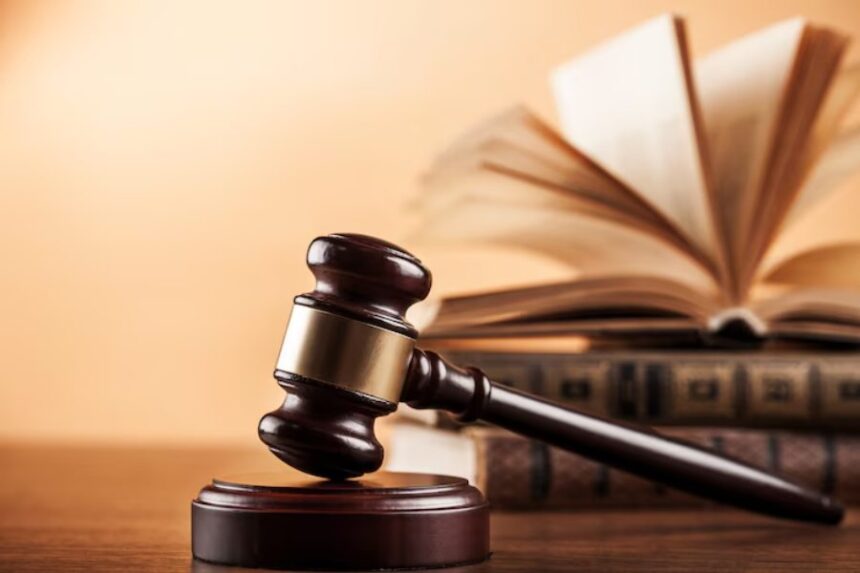In every democratic society, one foundational principle is crucial in maintaining balance, fairness, and accountability: the separation of powers. But what are the benefits of a separation of powers? This framework divides governmental authority among legislative, executive, and judicial branches, ensuring no single institution holds unchecked control. It’s more than just a theory in civics textbooks—it’s a critical mechanism that guards against tyranny, promotes transparency, and upholds the rule of law.
Whether you’re a student, a policy enthusiast, or a curious citizen, understanding what the benefits of a separation of powers are gives you insights into how democratic systems function effectively. This structure not only enhances efficiency in governance but also provides a framework for resolving conflicts of interest, ensuring each branch acts as a check and balance on the others. From promoting fair laws to ensuring impartial justice and limiting government overreach, the benefits of separating powers are both deep and far-reaching.
Let’s explore this topic further to see how this model supports the world’s most influential democracies.
What are the benefits of a separation of powers?
It prevents abuse of power by dividing responsibilities among branches of government, ensures checks and balances, strengthens democratic governance, protects individual freedoms, and encourages transparency in decision-making.
How the Separation of Powers Protects Democracy
The separation of powers is a political doctrine that assigns different government responsibilities to distinct branches—executive, legislative, and judicial. By doing so, it ensures that no single institution can monopolize power. Historically, this system has been essential in safeguarding democracy, especially in nations that transitioned from monarchies or authoritarian regimes.
Each branch is given autonomy and a unique function. The legislature makes the law, the executive enforces it, and the judiciary interprets it. This division is designed to minimize corruption and increase accountability. In practice, the separation of powers ensures that if one branch oversteps, another can intervene. For example, if the executive tries to enforce unconstitutional laws, the judiciary has the power to strike them down.
This system cultivates a culture of cooperation and mutual oversight. It fosters a healthy tension that enhances decision-making and protects civil liberties. In a functioning democracy, the separation of powers empowers institutions to act independently while still being part of a unified government.
A critical benefit is the way it slows down hasty legislation. In a parliamentary system, for instance, swift passage of laws might seem efficient, but it can sometimes sidestep debate and accountability. The separation of powers requires consensus and deliberation.
Finally, international bodies like the United Nations often look favorably on countries with a clear separation of powers, viewing them as more stable and predictable partners.
Why Governments Need Checks and Balances
In any democratic system, checks and balances are essential to prevent the misuse of power. They ensure that authority is shared, not concentrated.
How Checks and Balances Maintain Accountability
Checks and balances are built into the structure of separated powers. Each branch can check the actions of the others to prevent overreach. For instance, a president may veto a law, but the legislature can override it with a supermajority.
Judicial Review as a Guardian of Rights
The judiciary has the authority to review laws and executive actions. If deemed unconstitutional, they can nullify them. This ensures that laws align with the Constitution and protect individual rights.
Executive Powers and Legislative Oversight
While the executive branch leads the country’s administration, it remains accountable to the legislature. Through hearings and budget controls, the legislature ensures the executive does not operate unchecked.
Preventing Tyranny through Separation
One of the key benefits of a separation of powers is the prevention of tyranny. It distributes governmental power, ensuring that no branch can become autocratic.
Benefits of the Separation of Powers
The separation of powers creates a balanced government structure where each branch operates independently. This division strengthens democracy and protects citizens’ rights.
- Prevents Abuse of Power
Separating powers limits authoritarian control by ensuring no single body dominates government functions. - Promotes the Rule of Law
It ensures that all laws are equally applied, reducing political bias in interpretation and enforcement. - Encourages Specialization
Each branch focuses on a specific area—law-making, law enforcement, or law interpretation—enhancing efficiency. - Protects Individual Freedoms
When powers are divided, citizens enjoy more robust legal protections and liberties. - Enables Independent Judiciary
An autonomous judiciary prevents politically motivated decisions and ensures justice is impartial. - Enhances Transparency and Accountability
With clear roles and responsibilities, it’s easier for the public to identify and hold accountable any branch that oversteps.
Historical Context of the Separation of Powers
The roots of the separation of powers can be traced to ancient Greece and Rome, but its most influential advocate was the French philosopher Montesquieu. In his work “The Spirit of the Laws,” he argued that political liberty is best preserved when governmental powers are divided.
The U.S. Constitution institutionalized this theory, becoming a global example of its effectiveness. Over the years, the model has been adopted and adapted by countries worldwide. In places like India, Germany, and South Africa, the principle forms the foundation of governance, though its application may vary.
Historical abuses of power—from fascist regimes to colonial authorities—highlight why separation is necessary. Without it, rulers have historically used centralized control to suppress dissent, silence opposition, and exploit resources.
Even within democratic systems, the erosion of separation, such as politically influenced judges or executive overreach, raises red flags about governance quality. Thus, understanding what are the benefits of a separation of powers is not just academic—it’s vital for preserving civil society.
Exploring the Global Application of the Separation of Powers
Across the globe, the separation of powers is a foundational principle that ensures democratic governance remains fair, transparent, and effective. Although its structure varies by country, the core objective remains consistent: to prevent the concentration of power and foster accountability through institutional checks and balances.
What Are the Benefits of a Separation of Powers in the United States?
In the United States, the separation of powers is deeply rooted in the Constitution. It ensures that Congress (legislative), the President (executive), and the Supreme Court (judicial) function independently, yet collaboratively. This arrangement reduces the risk of autocratic leadership and preserves the integrity of the democratic system by balancing competing interests.
How Do Other Democracies Implement Separation of Powers?
Other democratic nations such as India, Australia, and Germany have adapted the model to fit their own political systems. While some use a hybrid of parliamentary and presidential systems, they still emphasize the importance of dividing powers and enforcing oversight among branches.
What Happens When Separation of Powers Breaks Down?
When the separation of powers weakens, especially in authoritarian-leaning governments, it often results in unchecked corruption, suppression of dissent, and a loss of judicial independence. This deterioration undermines civil rights and public trust in institutions.
How Does Separation of Powers Improve Policy Making?
Effective governance benefits when each branch contributes its unique perspective. By requiring laws and policies to be debated and approved across branches, the separation of powers ensures that decisions reflect broader consensus and are more refined and inclusive.
Conclusion
In a world where government power can either uplift or oppress, the question is: What are the benefits of a separation of powers?—has never been more relevant. This timeless system strengthens democratic values, protects human rights, and ensures that governance remains for the people. Whether in theory or practice, the separation of powers helps build a freer, fairer society.
FAQs:
How does the separation of powers limit government overreach?
Each branch can challenge or veto the actions of another, creating a built-in system of oversight that prevents excessive use of power and enforces accountability.
Why is judicial independence a benefit of the separation of powers?
It allows judges to rule based on the law without political influence. This impartiality strengthens public trust and ensures fair legal outcomes for all.
What role does the separation of powers play in protecting freedoms?
With power divided, no single authority can arbitrarily restrict rights. This framework upholds civil liberties and safeguards against authoritarian control.
How does the separation of powers encourage better policymaking?
By involving multiple branches, laws are debated, reviewed, and improved. This collaboration results in more effective, transparent, and inclusive policies.
What are the benefits of a separation of powers for legal systems?
It ensures that law-making, enforcement, and interpretation are done by different entities. This prevents biased decisions and promotes legal clarity and justice.
Can the separation of powers prevent corruption?
Yes, divided authority means no branch operates unchecked. If one abuses power, others can intervene, making it harder for corruption to thrive undetected.




